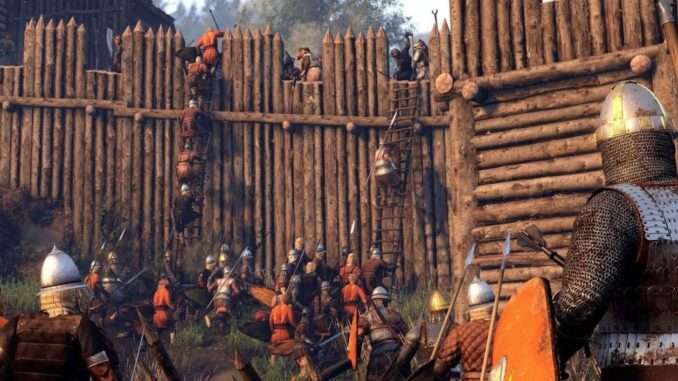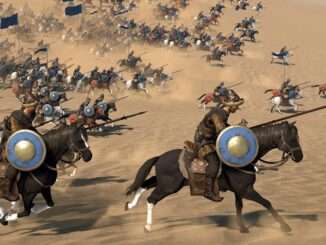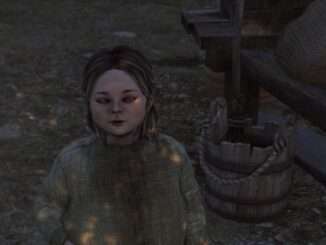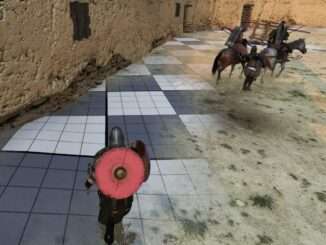
More Mount & Blade 2 Guides:
- Activate Cheats Guide.
- Locate & Rescue Traveler Quest.
- Complete Spy Party Quest Guide.
- How to Get 100k Denars (Step-by-Step).
- How to Find a Location of a Character.
- Guide to Founding a Kingdom.
- Early Game Smithing.
- How to Earn Money.
- Game Basic Guide.
A guide explaining which settings you need to change in order to run Bannerlord smoothly.
Guide to Performance Tweaks and Settings
Note: Credit goes to kony
Introduction
We all have different hardware as well as demands, therefore writing perfect settings for one or few configurations will help almost no one. Therefore there came an idea to me that explaining how various settings work should help you configure your game to however you’d like it to run.
Aspects to consider before setting up Bannerlord:
Do you focus on single or multi player game?
Multiplayer is always significantly more demanding than singleplayer, therefore if you plan on playing both I recommend testing results in multiplayer. It is very possible that your PC might run SP smoothly on high, but struggle with stable frame rates on medium in MP.
Monitor refresh rate and expectations
Do you aim at 30, 60, or 144 FPS? When playing single player, the amount of FPS will not matter as much as the player’s reaction as well as intelligence (at least I hope so) will always surpass bots. Therefore choosing stable 30 FPS and more beautiful graphic settings might be more preferable to some than lower quality but smoother image. This is very subjective. Nonetheless, for multiplayer I strongly recommend aiming at 60 FPS or more as the difference might be a matter of killing your enemy or losing to him as with FPS around 30 will give you inferior reaction to what is happening. Giving up graphical eye candy for more smooth image should be your preference. 144 FPS should be aim only if you have high refresh-rate display and powerful hardware to support it.
General performance of your system
Be realistic, how do you suspect the game will run on your hardware? You will not get decent results the first time, so start at some likely to be satisfying results the first time and then either lower or improve settings depending how the game works for you.
The game’s performance depends on: CPU, GPU, RAM and drive. I will assume that you have at least 16 GB of RAM, because if you do not, then you really should upgrade it. The speed of RAM should not affect performance in any significant way, therefore this guide will not mention it further. The guide will focus on the CPU, GPU and drive dependency.
Keeping in mind all of the above, let’s begin.
CPU and GPU Settings
The below settings should help you change settings depending how CPU or GPU limited your PC is. Next to each setting I put in brackets the device it is dependent. You can ignore “drive” requirements if you have SSD, however, if you still use HDD, then keep those on low.
Video
- Screen Resolution (GPU): Preferably use native of your monitor, only lower if otherwise game is unplayable. Lowering will result in extremely blurry image (unless you still use CRT monitor).
- Resolution Scale (GPU): Same as screen resolution, but lowers only 3D resolution without 2D menus.
- V-Sync (GPU): Disable unless you experience screen tearing, drawback of V-Sync is that you might experience input lag, therefore it’s better to always leave it off.
Performance
- Estimated GPU Memory Usage:Watch that it never goes beyond your GPU’s capacity when changing any settings!
- Number of Corpses (CPU, GPU) – CPU heavy, GPU light.
Sound Channels (CPU) – Unless you have a high end CPU, then set the sound channels to Low (128) or even Very Low (64). This will lower demand on CPU while you’re unlikely to hear much difference in the game anyway.
Shader Quality (GPU, CPU) – Calculates color of each rendered pixel, mostly uses GPU, but CPU also.
Texture Streaming Budget (GPU memory) – Recommended: LOW for < 2 GB VRAM, MEDIUM 2-3 GB, HIGH 4+ GB
Texture Quality (GPU, drive) – Quality of textures to load into GPU.
Shadow Quality (GPU) – Quality of shadows is calculated by GPU.
Shadow Type (CPU, GPU) – The amount of shadows is calculated by CPU, then results sent to GPU for further rendering.
Shadow Filtering (GPU) – Additional filtering of shadows done by GPU.
Particle Detail (CPU, GPU) – Amount of particles is calculated by CPU, further rendering by GPU.
Particle Quality (GPU) – Quality of particles is done by GPU only.
Foliage Quality (GPU, CPU) – Quality is done by CPU, but this settings changes the amount as well, hence taxes CPU too.
Character Detail (CPU, GPU) – Characters use CPU for more details (while quality of details depends on GPU).
Environment Detail (CPU, GPU) – Similar to the above, but with environment.
Terrain Quality (GPU) – Textures on the ground, GPU bound.
Number of Ragdolls (CPU) – Physics fully calculated by CPU.
Occlusion Method (GPU) – Additional filters by GPU.
Texture Filtering (GPU) – Additional filters by GPU.
Water Quality (GPU) – Done by GPU.
Anti-aliasing (GPU) – Additional filters by GPU.
Lighting Quality (CPU, GPU) – Light sources calculated by CPU, then sent to GPU for further rendering and quality refinement.
Decal Quantity (CPU) – The amount of decals is calculated by CPU.
Depth of Field (GPU) – Minor effect by GPU.
Screen Space Reflection (GPU) – Minor effect by GPU.
Cloth Simulation (GPU) – Cloth physics are done by GPU in this particular engine.
Interactive Grass (CPU) – Minor grass physics calculated by CPU.
Sun Shafts (GPU) – Minor effect by GPU.
Subsurface Scattering (GPU) – Visual effect to improve lighting on some materials calculated by GPU.
Tesselation (GPU) – Improves geometry of objects, calculated by GPU.
Bloom (GPU) – Minor effect by GPU.
Film Grain (GPU) – Minor effect by GPU.
Motion Blur (GPU) – Minor effect by GPU.





Be the first to comment